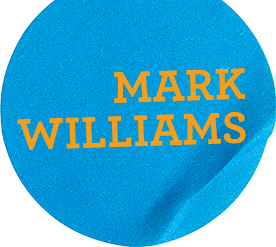In uncertain times, the most important thing you can do for your personal brand is to be consistent. Consistency breeds certainty, which builds a foundation of trust between you and your customers.
I often speak about personal branding with professionals in the finance and insurance industry, and I think the insights shared there apply across the board to professionals and brands in any arena.
“Do you have a personal brand?”
It’s a question I often ask professionals looking to reinvigorate their businesses or perform some kind of analysis of the customer journey with their brand.
What I find is that out of a group of 100 respondents, invariably only 20% of people say they have a personal brand. About another 20% still think of a brand as nothing more than a logo.
We know that a brand is so much more than a logo. It’s what people tell others about a business. In the case of a personal brand, it’s what people say about you when you’re not around.
It’s the cumulation of images, experiences, memories and feelings people carry in their minds about a person or business. And it can make all the difference between success and failure in the business world.
Perception is reality.
The larger your business grows, the more important your brand becomes. If people perceive you or your business as overconfident, arrogant or rude, that will have direct implications on your ability to advance in your career, to retain customers for repeat business and to build satisfying, long-term relationships with vendors.
That’s why it’s critically important to know what your customers think about your brand. Don’t assume your perception of your brand matches that of your customers.
If you’re the CEO or CMO of a large business, invest in customer journey research to truly understand what your customers experience at every touch point of the sales process with your brand. If you run a small business, take a step back and evaluate what customers experience when they call, text or visit your office.
Take a critical look at the furniture in your waiting room.
Listen in on a few calls to hear how callers are greeted.
Examine the way billing or other operational emails are worded.
Is there consistency? Does the language used reflect what you define your personal brand to be? Do the internal operations at your company support your brand identity, messaging and promise?
Optimize your back-end operations for a consistently satisfying customer experience.
Sometimes the unseen operations of a business can cause the biggest concern from a sales perspective. Consider the mail as a timely example.
When mail arrives late or damaged, whom do you blame? Most likely it’s the mail carrier, as he or she is your main touch point with the brand that is the U.S. Postal Service. What makes or breaks the postal service isn’t mail delivery. It’s the sorting, transportation and organizing of the mail before it goes into the carrier’s truck or mail bag.
A similar example can be seen with restaurants. When your order is late or wrong, whom are you likely to show your dissatisfaction to? Most likely the server. Even if the problem was due to the kitchen, the server will likely pay for the disappointing service in the form of a bad tip.
Customers have the same experience with your brand or business when your back-end operations aren’t optimized for a consistently satisfying service.
Brand promises are either kept or broken in the back-end operations of your business. Your brand identity is either upheld or violated by what customers can’t see.
Keep this reality in mind when making decisions about what to cut expenses on, from an operating perspective. While an answering service may save you money in the short term, it could cost you business in the long run. While a cheaper CRM system may save you money now, you could pay for it in the form of dissatisfied customers who get a disinterested stranger every time they call in to your brand.

